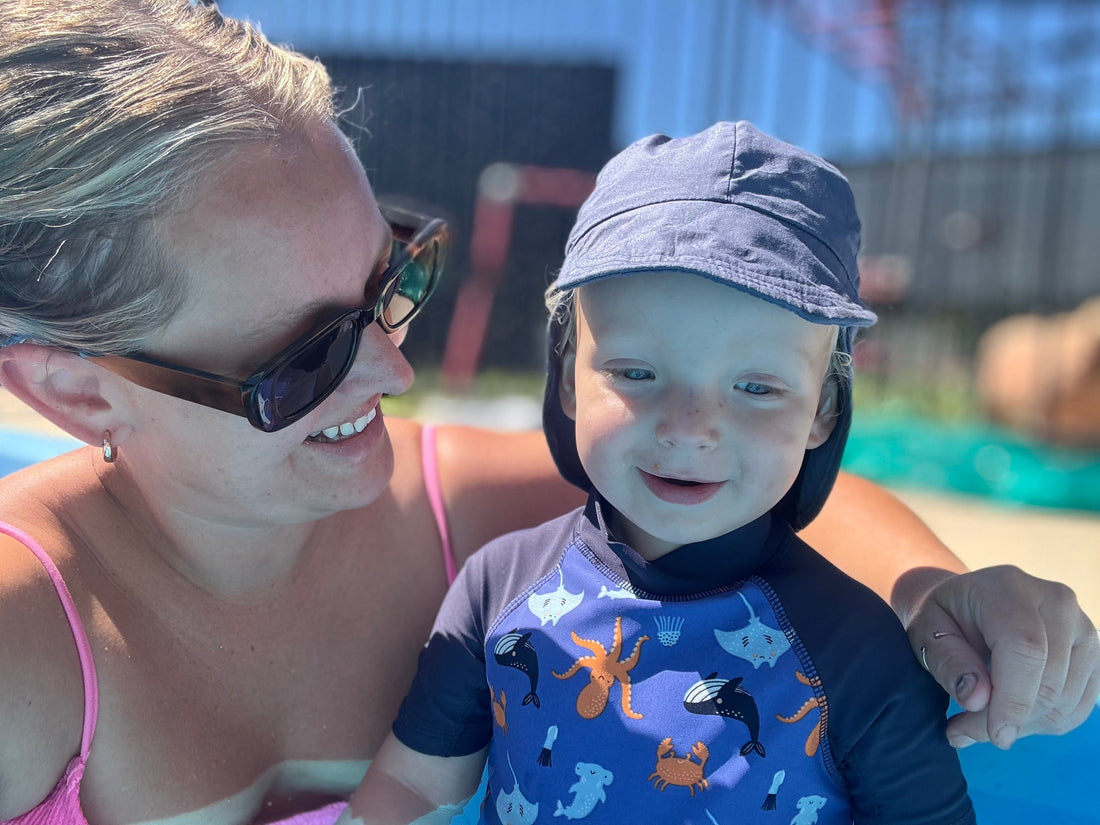
The Power of Schema Play: How a simple container Became a Learning Tool
Share
As an early childhood educator and parent, I'm constantly amazed by how the simplest objects can become powerful learning tools for toddlers. Today, I want to share a recent experience that perfectly illustrates the concept of schema play and its alignment with the Early Years Learning Framework (EYLF).
What is Schema Play?
Schemas are patterns of repeated behavior that allow children to explore and express developing ideas and thoughts through their play and exploration. The concept, developed by Jean Piaget, helps us understand how children make sense of the world around them.
Our Pool-Time Discovery:
During a recent pool session, my toddler became fascinated with a container. What followed was a beautiful display of schema play in action:
1. Trajectory Schema: He explored how water moved through space as he poured it from different heights.
2. Transporting Schema: He repeatedly filled the container and moved water from one place to another.
EYLF Connection:
This play aligns perfectly with EYLF Outcome 4: Children are confident and involved learners. Through this simple activity, my toddler was:
- Developing dispositions for learning such as curiosity and creativity
- Exploring the environment with increasing confidence
- Experimenting with cause and effect
The Learning Benefits:
1. Sensory Development: The feel of water, the sound of splashing, and the visual tracking of water flow all contribute to sensory learning.
2. Motor Skills: Scooping, pouring, and aiming all enhance fine and gross motor skills.
3. Cognitive Development: Early math concepts (volume, empty/full) and physics (gravity, flow) are explored.
4. Language Development: This play creates opportunities to introduce new vocabulary (pour, splash, float, etc.)
How You Can Encourage Schema Play:
1. Provide simple, open-ended materials: Everyday items like containers, spoons, or balls can become powerful learning tools.
2. Observe your child's interests: Notice which schemas they're exploring and provide materials that support those interests.
3. Allow for repetition: Repeating actions is how children test theories and solidify learning.
4. Join in the play: Ask open-ended questions and describe what's happening to extend the learning.
5. Extend the play: If your child enjoys pouring water, try the same activity with sand or rice for a new sensory experience.
The Role of the Adult:
As parents and educators, our role is to create an environment that supports schema play. This means:
- Providing a safe space for exploration
- Offering a variety of materials
- Allowing time for uninterrupted play
- Recognizing and valuing the learning that's taking place
Connecting to Theory:
This type of play aligns with Vygotsky's sociocultural theory of cognitive development. As we interact with our children during these activities, we're operating in their Zone of Proximal Development, scaffolding their learning and helping them reach new understandings.
EYLF Principles in Action:
This simple water play activity demonstrates several EYLF principles:
1. Secure, respectful, and reciprocal relationships: Through shared experiences and responsive interactions.
2. Partnerships: As we engage in play alongside our children, we're building strong partnerships.
3. High expectations and equity: By recognizing the learning potential in simple activities, we're setting high expectations for all children.
4. Respect for diversity: Schema play allows each child to explore in their unique way, respecting individual learning styles and interests.
The next time you see your toddler repeatedly pouring water or moving objects from one place to another, remember - you're witnessing powerful learning in action. By understanding and supporting schema play, we can help our children become confident, curious, and capable learners.
So, grab any simple container and head to the pool, bath, or even the kitchen sink. A world of learning awaits!
